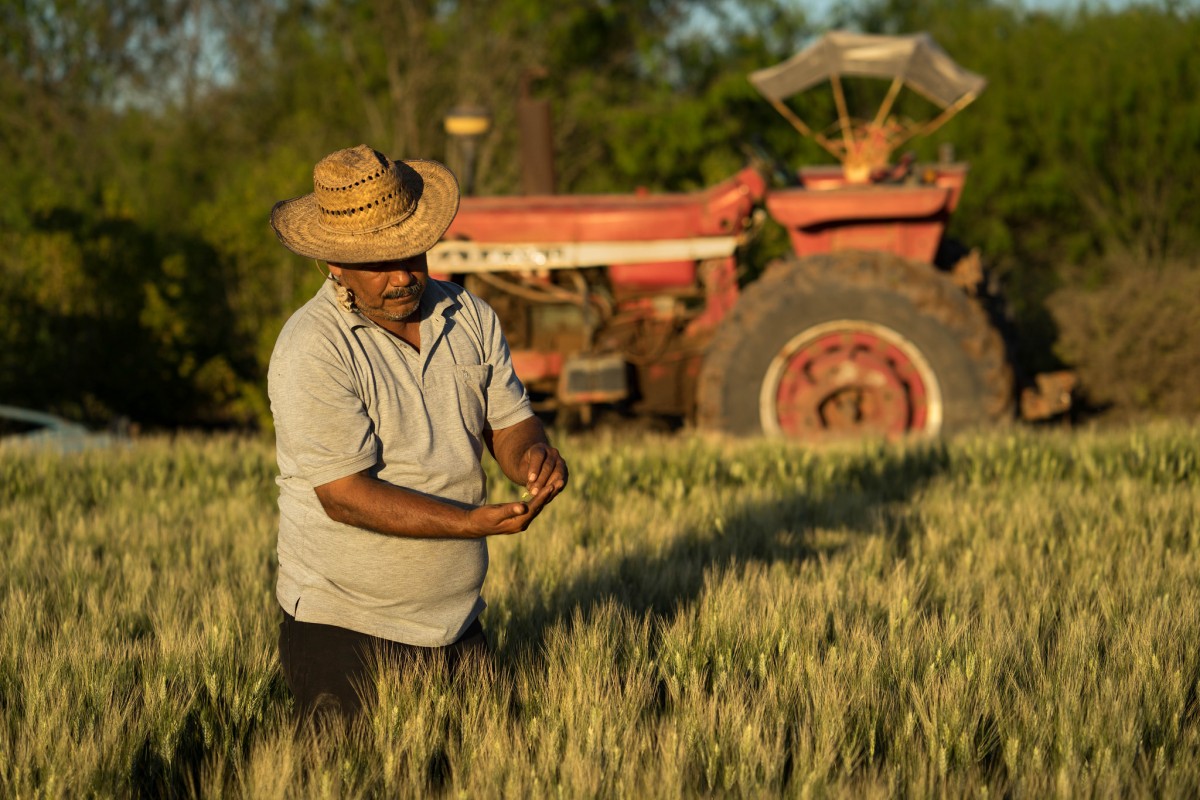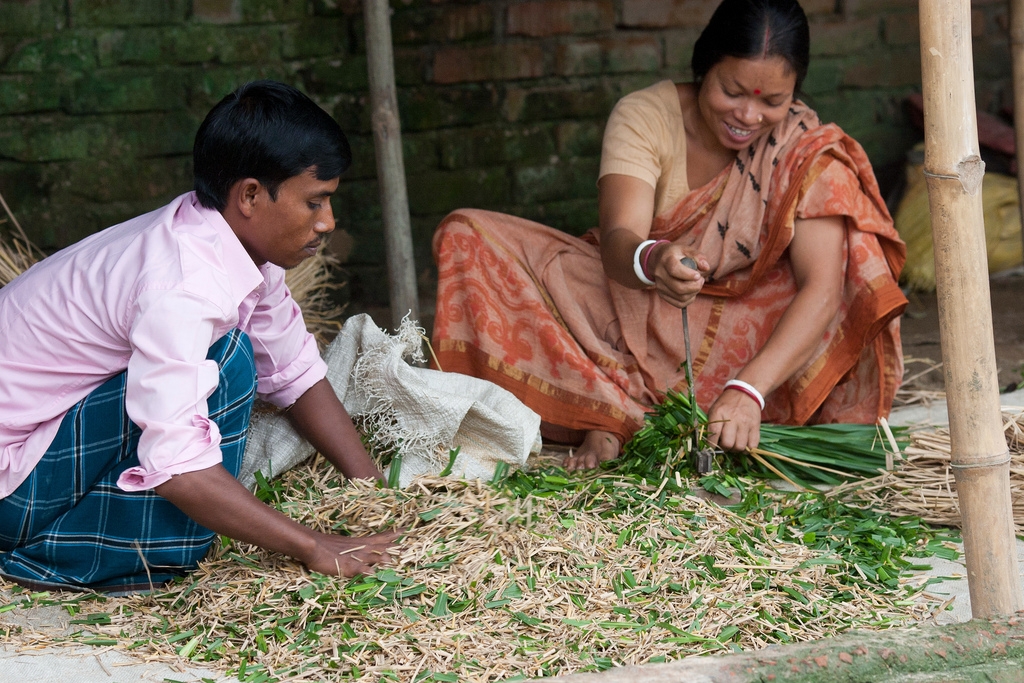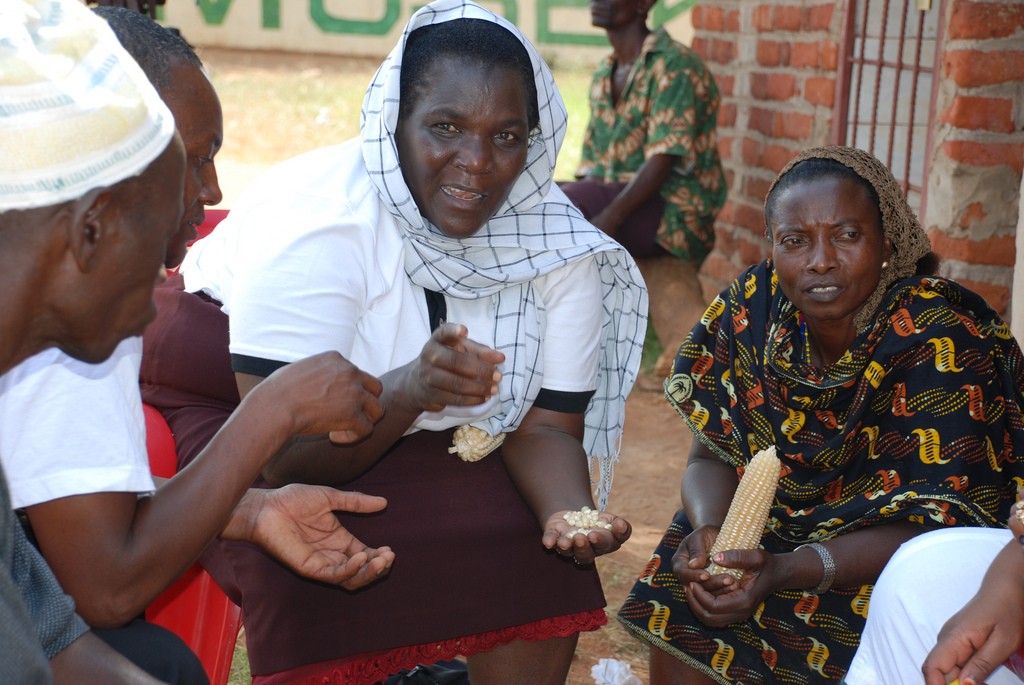Farm wives or female farmers? How words create gender trouble in agriculture
“It matters what we use to think other matters with; it matters what stories we tell to tell other stories with; it matters what knots knot knots, what thoughts think thoughts, what descriptions describe descriptions, what ties tie ties. It matters what stories make worlds, what worlds make stories.” (Donna Haraway, 2016).
In the introduction to her famous book Gender Trouble, Judith Butler articulated a dilemma that is at the heart of feminist efforts to represent women: How to produce the (or a) truth about women, if languages or systems of thought are themselves suspected of being masculinist?
This dilemma is one that is pertinent for efforts to produce (better) truths about women in smallholder agriculture. Prevailing scientific and policy languages used to make sense of farming and agriculture are particularly ill-suited for representing women or gender, because these languages rely on and make use of spatial and ideological imageries that have particularly strong gender connotations.

Talking about agriculture as dominated by men makes it dominated by men
For one, farms and what goes on within them are often seen as ‘the work place’, a domain or area that is spatially and socially distinct from ‘the home’. The farm is the place where production (preferably for the market) occurs (and where incomes are earned), separate from the place where consumption happens. Second, the farm is also the place that is labeled and seen as ‘public’, in implicit contrast to the ‘private’ location of home and family.
In making sense of agriculture, the public world of work and production tends to figure, and may be ideologically constructed, as a world in which men dominate. This construction may rest on normative ideas that men are or should be the breadwinners and principal income earners, in contrast to women who are or should be carers, cleaners and mothers. It is definitively a construction that is reinforced by a widespread and strong ideological connotation of the word farmer as someone with a masculine identity.
The use of these dichotomized metaphors therefore not only strongly determines who are and can be recognized as important actors in farming, but also shapes how actors are recognized.
The opposing metaphors also influence agricultural thinking in more diffuse ways, through loosely associating masculinity with all that matters to farming in implicit opposition to associating femininity with all that is less relevant. Hence, market crops may be considered more important than subsistence crops; the irrigation of rice may take priority over the irrigation of gardens; and economic and productivity incentives for behavior may be considered more real than (and normatively superior to) those based on emotions, solidarity and affection. Work predominantly done by women, such as cooking and the provision of meals for agricultural laborers may not be considered as part of farm work.
The opposition between male and female does not match agricultural realities
How ill-suited these opposing imageries are for representing agriculture becomes clear when realizing that in smallholder farming, home and work are often closely interconnected: An important objective of farm activities is family survival, but family circumstances and considerations also importantly influence agricultural decisions and behavior. Indeed, work, fields and genders are not so easy to categorize in two distinct domains.

Most smallholder farm households display a high degree of interdependence between production and subsistence activities, and between the household’s farm functions and its family functions. Domestic (or reproductive) labor is often characteristic of all household members’ activities, across agricultural as well as subsistence production, and is not restricted to women’s work. And farming is not just about production, and not just associated with the activities of those who own productive resources or make investments.
Re-connecting the relations and linkages between the so-called ‘private’ and ‘public’, ‘male’ and ‘female’ activities, and acknowledging how they are in part defined by and through each other, is therefore central to attempts to produce truths about women in agriculture.
Time to start questioning what we think we know
A proper understanding of gender relations in agriculture and farming is crucially dependent on a thorough re-thinking of the metaphorical and spatial (and sometimes ideological and normative) concepts and images used. It is necessary to overcome the oppositions between the economic, rational world of production and politics on the one hand and the affectionate and emotional world of the home and the family on the other that these concepts and images produce.

This can, for instance, be done by recognizing the subsistence and livelihood functions of farms. It can also be done by recognizing that men are not just farmers, but also husbands and fathers. Or by acknowledging that women’s identities are not confined to those of mothers and (house-)wives, but also often include those of farmers and decision makers. It includes allowing for the possibility that important agricultural negotiations occur in the domestic domain. And it requires a critical revisiting of what is recognized and defined as farming labor and behavior, and of who are recognized as farmers, for what is included in these definitions may well in itself be gendered.
Rather than assuming the meaning and boundaries of ‘farms’, ‘households’ and ‘farmers’, and the terms and criteria for inclusion in agriculture, these concepts and definitions should themselves be made the object of inquiry. If these definitions and conceptual categories are themselves a way of defining and reconfirming ideas about gender—of distinguishing men from women, or of denoting distinctions between masculine from feminine behaviors—is it time to change the way we talk about agriculture?
##
Thrive blog is a space for independent thought and aims to stimulate discussion among sustainable agriculture researchers and the public. Blogs are facilitated by the CGIAR Research Program on Water, Land and Ecosystems (WLE), but reflect the opinions and information of the authors only and not necessarily those of WLE and its donors or partners. WLE and partners are supported by CGIAR Fund Donors, including ACIAR, DFID, DGIS, SDC and others.



Add new comment